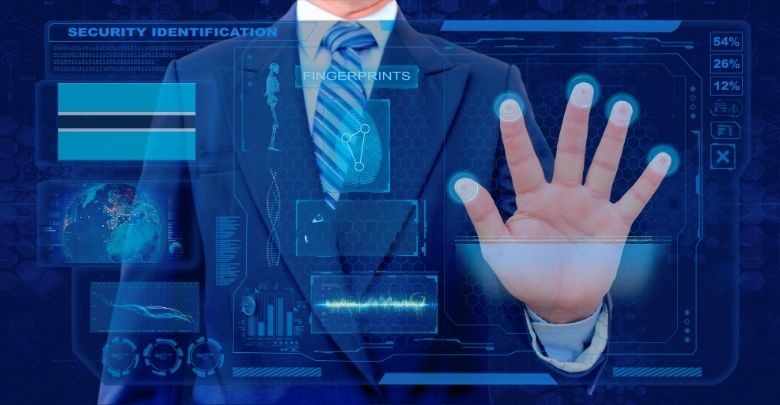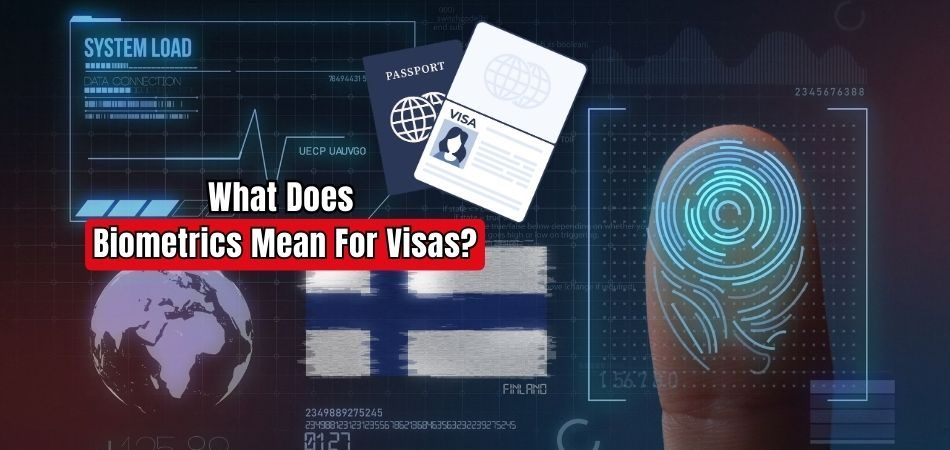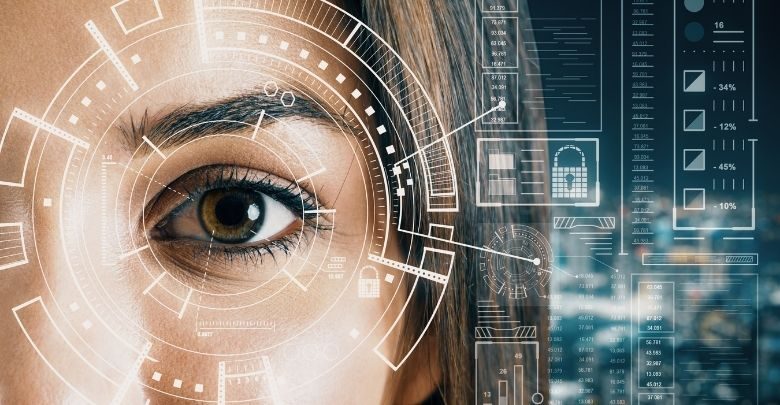Advancements in technology have revolutionized many aspects of our lives, including how we manage travel and security. Among these innovations is biometric technology, which plays a crucial role in modern processes. If you’re curious about how this technology impacts international travel, you might be wondering, “What does biometrics mean for visas?”
Biometrics for visas involves collecting unique physical characteristics, like fingerprints and facial scans, to confirm a traveler’s identity. This data is securely stored and used by immigration authorities to prevent fraud and enhance security. It improves visa processing efficiency by cross-referencing applicants with global databases.
What does the future of travel and security look like with biometrics? Dive into the article to explore every aspect of this technology, including its benefits, challenges, and what it means for your travel plans. You’ll find all the essential information you need right here.
Why Are Biometrics Important for Visas?
The use of biometrics is crucial for visa applications since it allows applicants to verify their identities securely. Fingerprints and digital photographs are unique to each individual, making it difficult for someone to use another person’s identity illegally. This increases the security of the visa application process, ensuring that the right person is granted entry.
In addition to improving security, biometrics help simplify the visa processing system. By storing biometric data in a secure database, immigration authorities can quickly and accurately identify individuals. This reduces the chances of errors and speeds up the overall process, making it more efficient for both applicants and officials.
Biometrics also plays a significant role in international travel security. By sharing biometric data between countries, governments can better track and manage individuals entering and leaving their borders. For example, if you’re applying for a Canadian visa, understanding the next steps after biometrics for Canada visa can further streamline the process. This cooperation helps eliminate illegal activities such as human trafficking and terrorism, making global travel safer for everyone.
What Does Biometrics Mean for Visas?
Biometrics play a crucial role in modern visa application processes worldwide. As technology advances, security measures for international travel have intensified, leveraging biometric data to enhance traveler identification. This article delves into how biometrics are used in visa protocols to ensure security and streamline entry procedures.
Biometric Data Collection
When applying for a visa, applicants are often required to provide biometric data, which includes fingerprints and facial scans. This information is stored in secure databases accessed by immigration and border control agencies. The purpose is to verify the identity of travelers upon entry and exit, minimizing the risk of identity fraud and enhancing security.
Role in Visa Processing
As part of the visa processing stage, authorities cross-reference applicants’ biometrics with international criminal and security databases. This process ensures that individuals who pose a security threat or have violated immigration rules in the past can be easily identified and processed accordingly.
Impact on Security Measures
The integration of biometric technology in visa applications significantly improves security measures. By having a reliable method to authenticate identities, countries can prevent unauthorized entry and track individuals who might overstay their visas or violate other immigration laws.
Efficiency in Handling Applications
Using biometrics also makes visa applications more efficient. Automated systems can quickly match biometric data with existing records, speeding up the decision-making process for visa approvals. This efficiency helps in managing large volumes of applications, especially from high-traffic countries.
Privacy and Data Protection
While biometric data collection increases security, it also raises concerns about privacy and data protection. Visa applicants must trust that their sensitive information is handled responsibly. Countries use advanced encryption and strict data access controls to protect this information from unauthorized access.
Future of Travel and Biometrics
The future of international travel will likely see an even greater reliance on biometrics in the future. Innovations like iris scanning and voice recognition could become standard in visa processing in the future, further improving the accuracy and security of traveler identification methods.
As the world becomes more connected, biometrics in visas will continue to evolve and shape the future of global travel, providing both challenges and opportunities. As the world becomes more connected, the role of biometrics in visas will continue to evolve, shaping the future of global travel.
How Are Biometrics Collected for Visa Applications?
Biometric data collection is an essential aspect of the visa application process, ensuring accurate identification and increased security for international travel. This system not only simplifies entry procedures but also supports immigration control efforts. Let’s explore the typical steps involved in collecting biometrics during visa applications.
Step 1: Initial Registration
The process of applying for a visa usually begins with an individual visiting their local visa application center or embassy to submit their biometric data as part of the visa application process. This usually occurs after the initial review of their application documents.
Step 2: Fingerprints Scanning
An electronic fingerprint scan is a common biometric procedure that allows applicants to have their fingerprints scanned electronically, capturing all ten fingers. This is a quick and efficient method of capturing a digital record, which is highly secure and difficult to falsify.
Step 3: Facial Recognition Capture
Digital photographs of the applicant are captured using facial recognition technology. This photo must meet specific criteria, such as a neutral expression and clear visibility of the face. This image is used to verify the applicant’s identity against their passport photo and during border checks.
Step 4: Data Verification
It is crucial that after the biometric data has been collected, it is verified by a third party to ensure their accuracy and authenticity. This step is crucial in order to match and cross-referentially cross-reference the applicant’s details against global security databases.
Step 5: Data Storage
There is a centralized database containing all the biometric data that is collected during visa processing. This database is accessible only by authorized immigration and border control agencies. This database is used for future verifications and to maintain the validity of the visa application process.
Collecting biometric data is a vital step in enhancing visa application security and efficiency. This process safeguards identity verification and supports global immigration control, ensuring smoother international travel while upholding stringent security standards for applicants worldwide.
How Much Does the Biometric Fee Cost for Different Types of Visas?
When applying for a visa, the biometric fee can vary depending on the type of visa and the applicant’s location. For example, the biometric fee for Canada visa in Kenya may differ from fees in other countries due to regional processing costs. Below are the details of biometric fees for different types of visas.
Biometric Fees for Visitor Visas
Visitor visas typically require biometric information as part of the application process. This fee can vary depending on the country of application. Applicants might find that the biometric fee differs from other countries. This fee covers the cost of collecting fingerprints and photographs, essential for identity verification.
Work Visa Biometric Fees
For those applying for a work visa, the biometric fee is often included in the overall application cost. It is important to be aware of the specific amount required, as it can impact the overall budgeting for the visa process. Knowing the biometric fee should be carefully checked to ensure all necessary expenses are accounted for. This fee helps facilitate the verification process and maintain security standards.
Family Sponsorship Visa Biometric Fees
Family sponsorship visas also require biometric information, which entails its own set of fees. Knowing the costs involved is crucial for applicants seeking to bring family with them. The biometric fee can be a significant part of the total expenses. This charge contributes to the processing and security measures in place to evaluate the application effectively.
Permanent Residence Visa Biometric Fees
Biometric fees are also necessary for processing applications for permanent residence visas. This fee varies based on the country and specific visa type. Knowing the biometric fee is vital for applicants to accurately budget their expenses during the permanent residency application process.
Knowing the various biometric fees associated with different visa types is essential. This knowledge can help applicants prepare adequately and avoid surprises, ensuring a smoother and more efficient visa application process from start to finish.
How Long Does the Biometrics Process Take?
The biometrics process is a key component of modern visa applications, aimed at increasing security and efficiency. While it may seem complex, understanding the typical timeframes involved can simplify the application experience. Here’s a breakdown of how long each part of the biometrics process takes.
Appointment Scheduling
As for the requested biometric appointment, it may take from a few days to several weeks to secure a suitable slot. Typically, applicants need to book an appointment online or through a visa application center. Depending on the location and the demand, it may take from a few days to several weeks to secure a suitable slot.
Data Collection
Aside from collecting biometric data (like fingerprints and facial scans) during the appointment, the actual process of collecting the data is relatively quick. During the appointment, all the necessary biometric information is collected. This step generally takes around 15 to 30 minutes, depending on the technology and the efficiency of the center.
Processing Time
After data collection, there is a processing period where the biometric information is reviewed and matched against existing records. This can take anywhere from a few hours to several days. The duration often depends on the volume of applications and the efficiency of the processing systems.
Interaction with Application
After the biometric data has been processed, it is merged with the visa application to ensure that the information collected has been correctly linked to the applicant’s application file. This process normally takes an additional one to two days, depending on the volume of biometric data.
Final Verification
This last phase of verification involves cross-referencing the biometric data with other information found in the security databases and other records. This is a critical step that can take up to a week or longer, depending on the complexity of the checks and the responsiveness of the systems that are involved.
The biometrics process is designed to improve security and simplify visa applications, though the time required can vary based on several factors. Patience and careful planning can help ensure a smooth and efficient application experience.
Essential Tips for Preparing Your Biometrics Appointment
Attending a biometrics appointment is crucial to the visa application process. Proper preparation can make the experience smoother and faster. Here are practical tips to help you prepare for your appointment.
- Arrive Early: Aim to arrive at least 15 minutes before your scheduled time to handle any unforeseen delays or additional paperwork.
- Bring Identification: Carry your passport and any other required identification documents as specified in your appointment letter.
- Know Your Appointment Details: Keep a copy of your appointment letter handy, as you may need to reference your scheduled time and date.
- Have Clean Hands: Ensure your fingers are clean and free of cuts or ink to obtain clear fingerprint scans.
- Avoid Accessories: Remove any accessories that could interfere with fingerprint scanning or facial recognition, such as rings or heavy makeup.
- Dress Appropriately: Choose clothing that does not cover your face or hands, as these need to be clearly visible for capturing biometric data.
- Stay Hydrated: Being well-hydrated can improve your appearance for facial scans and make the experience more comfortable.
Preparing well for your biometrics appointment ensures a hassle-free process, contributing to a smooth journey towards securing your visa. Understanding the importance of biometrics for visa applications can help you approach this step with the necessary preparation and awareness.
Frequently Asked Questions
For those dealing with the complexities of visa applications, understanding the role of biometrics is essential. Here are some frequently asked questions that shed light on the less discussed aspects of biometrics in the visa process.
What Are Biometrics Used For Besides Security In Visa Processing?
The use of biometrics goes beyond security. They facilitate quicker visa renewals by allowing authorities to verify identities quickly without reprocessing a lot of documentation. Additionally, biometric data helps manage records for frequent travelers, making re-entry more efficient and seamless.
How Are Minors Handled In The Biometrics Process?
It depends on the country and the child’s age whether or not the requirements for minors differ. In most cases, minors will be required to provide biometrics, such as fingerprints or photographs, and in some countries, very young children may be exempt or have their procedures simplified.
Can I Present A Paper Or A Workshop At The Conference?
Yes, conference organizers often invite paper and workshop submissions. You should review the conference’s call for papers and workshop proposals for detailed submission guidelines, deadlines, and specific requirements. This opportunity allows you to share your research or expertise with a professional audience.
What Measures Are In Place To Protect My Biometric Data?
To protect biometric data, countries use stringent data protection measures. This includes advanced encryption technology to secure data during transmission and storage. Access to biometric databases is tightly controlled and monitored to ensure that only authorized personnel can view or use this sensitive information.
How Does Biometric Data Improve Visa Renewal Processes?
Biometric data simplifies the visa renewal process by providing a reliable and fast way to verify an individual’s identity. This reduces the need for lengthy manual checks and paperwork, leading to quicker processing times. For frequent travelers, this efficiency can significantly simplify the renewal process.
End Note
Visa applications now incorporate biometric technology, thereby increasing security and efficiency. From the collection of fingerprints to facial recognition, each step is designed to ensure accurate identification of travelers. This process not only prevents identity fraud but also simplifies entry procedures, making international travel safer and more efficient.
If you’re still wondering, “What does biometrics mean for visas?”, it involves the use of unique physical characteristics to confirm an applicant’s identity. By collecting and storing biometric data such as fingerprints and facial scans, immigration authorities can verify travelers’ identities and cross-check them against international security databases, ensuring only legitimate travelers are granted entry.
To ensure a smooth biometrics appointment, arrive early, bring all necessary identification documents, and dress appropriately. Following these tips will help you manage the process with ease. Best wishes for a successful visa application and a smooth travel experience!








